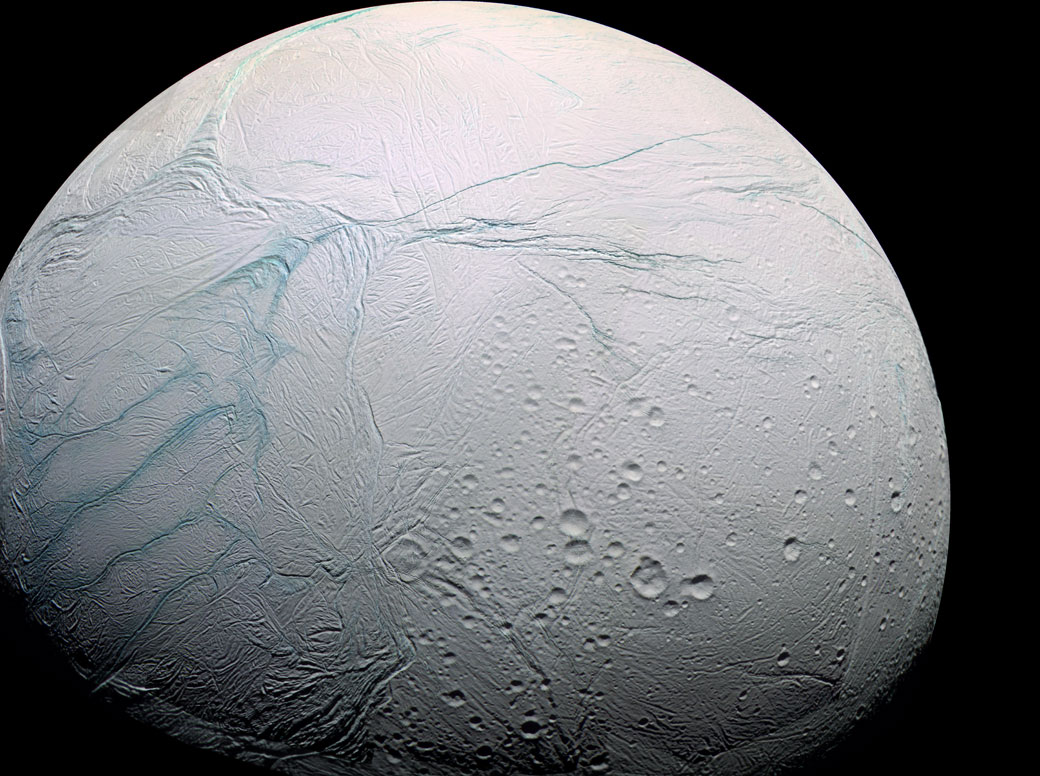It’s one of the best places that we might expect to find some form of life in our solar system and the Cassini spacecraft is about to conduct one of its last flybys of the small moon.

Enceladus, one of Saturn’s 50-plus moons, is an icy world only 500 km in diameter. But the moon is one of the most interesting bodies in our solar system. In 2005, the Cassini spacecraft, which has been orbiting the Saturnian system since 2004, discovered that the moon has geysers of water vapour that continue to erupt from the moon’s surface. The icy water particles and gas fly out into space near 400 metres per second and provide the material in one of Saturn’s rings.
READ MORE: Could life exist on Saturn’s moon Titan? These scientists are hopeful
What’s most intriguing is that earlier this year, scientists discovered that the moon’s slight wobble can only occur if the the outer shell isn’t frozen to its interior, suggesting that a global ocean must exist beneath the icy crust.
Not only that, but bolstering the optimism that life could exist on Enceladus are findings released this year of evidence of hydrothermal vents at the bottom of the ocean. Why is that a big deal? For a couple of reasons. For one, we know that here on Earth life exists around these types of vents. In fact, life around these vents can exist without sunlight, feeding off the nutrient-rich water. It is believed that life here at home began near these types of vents.
“The global nature of Enceladus’ ocean and the inference that hydrothermal systems might exist at the ocean’s base strengthen the case that this small moon of Saturn may have environments similar to those at the bottom of our own ocean,” said Jonathan Lunine, an interdisciplinary scientist on the Cassini mission at Cornell University. “It is therefore very tempting to imagine that life could exist in such a habitable realm, a billion miles from our home.”
On Wednesday, Cassini will fly by just 1,839 km above the surface of the moon.
NASA said that it will get the images within one to two days after the flyby.
This is the spacecraft’s third final pass of the icy world. The last two flybys will occur later this month and in mid-December.



Comments